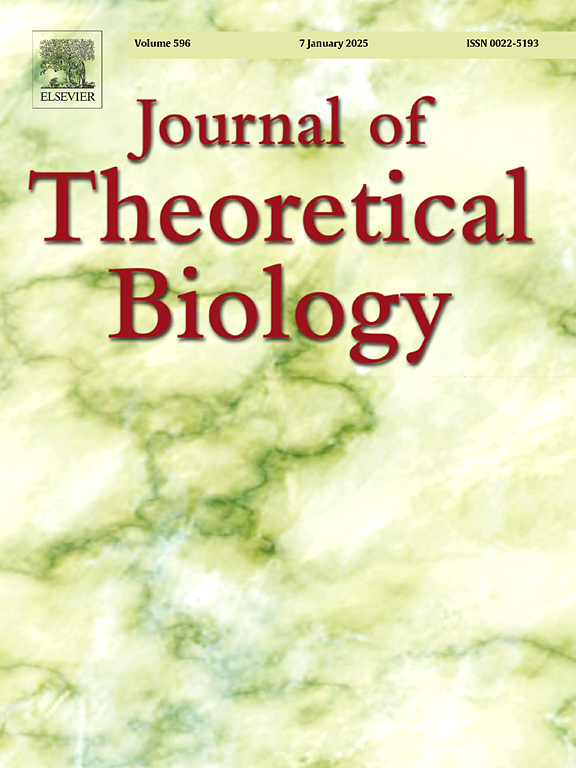What does the tree of life look like as it grows? Evolution and the multifractality of time
IF 1.9
4区 数学
Q2 BIOLOGY
引用次数: 0
Abstract
By unifying three foundational principles of modern biology, we develop a mathematical framework to analyze the growing tree of life. Contrary to the static case, where the analogy between phylogenetic trees and the tree that grows in soil is drawn, our framework shows that the living tree of life is analogous to a Cantor dust where each branch is a distinct fractal curve. The system as a whole is therefore multifractal in the sense that it consists of many unique fractals. The three foundational principles for the mathematical framework are that phylogeny is nested, phylogeny is dualistic (i.e., transitive between singularities and populations), and phylogeny is stochastic. Integrating these three principles, we model the dynamic (i.e., living) tree of life as a random iterated function system that generates unique convexly related sequences of branching random variables (visualized in Animation 1). The multifractal nature of this dynamic tree of life implies that, for any two living entities, the time interval from their last common ancestor to the present moment is a distinct fractal curve for each. Thus, the length of a time interval along each distinct branch is unique, so that time is also multifractal and not an ultrametric on the tree of life.
生命之树生长的时候是什么样子的?进化和时间的多重分形
通过统一现代生物学的三个基本原则,我们开发了一个数学框架来分析生命之树的生长。与静态情况相反,系统发育树和生长在土壤中的树之间的类比是绘制的,我们的框架表明,生命之树类似于康托尘,其中每个分支都是一个不同的分形曲线。因此,系统作为一个整体是多重分形的,因为它由许多独特的分形组成。数学框架的三个基本原则是系统发育是嵌套的,系统发育是二元的(即在奇点和种群之间传递),系统发育是随机的。综合这三个原则,我们将动态(即生命)生命树建模为随机迭代函数系统,该系统生成独特的凸相关分支随机变量序列(在动画1中可视化)。这种动态生命树的多重分形性质意味着,对于任何两个生物实体,从它们最后一个共同祖先到现在的时间间隔是一个不同的分形曲线。因此,沿着每个不同分支的时间间隔的长度是唯一的,所以时间也是多重分形的,而不是生命树上的超尺度。
本文章由计算机程序翻译,如有差异,请以英文原文为准。
求助全文
约1分钟内获得全文
求助全文
来源期刊
CiteScore
4.20
自引率
5.00%
发文量
218
审稿时长
51 days
期刊介绍:
The Journal of Theoretical Biology is the leading forum for theoretical perspectives that give insight into biological processes. It covers a very wide range of topics and is of interest to biologists in many areas of research, including:
• Brain and Neuroscience
• Cancer Growth and Treatment
• Cell Biology
• Developmental Biology
• Ecology
• Evolution
• Immunology,
• Infectious and non-infectious Diseases,
• Mathematical, Computational, Biophysical and Statistical Modeling
• Microbiology, Molecular Biology, and Biochemistry
• Networks and Complex Systems
• Physiology
• Pharmacodynamics
• Animal Behavior and Game Theory
Acceptable papers are those that bear significant importance on the biology per se being presented, and not on the mathematical analysis. Papers that include some data or experimental material bearing on theory will be considered, including those that contain comparative study, statistical data analysis, mathematical proof, computer simulations, experiments, field observations, or even philosophical arguments, which are all methods to support or reject theoretical ideas. However, there should be a concerted effort to make papers intelligible to biologists in the chosen field.

 求助内容:
求助内容: 应助结果提醒方式:
应助结果提醒方式:


